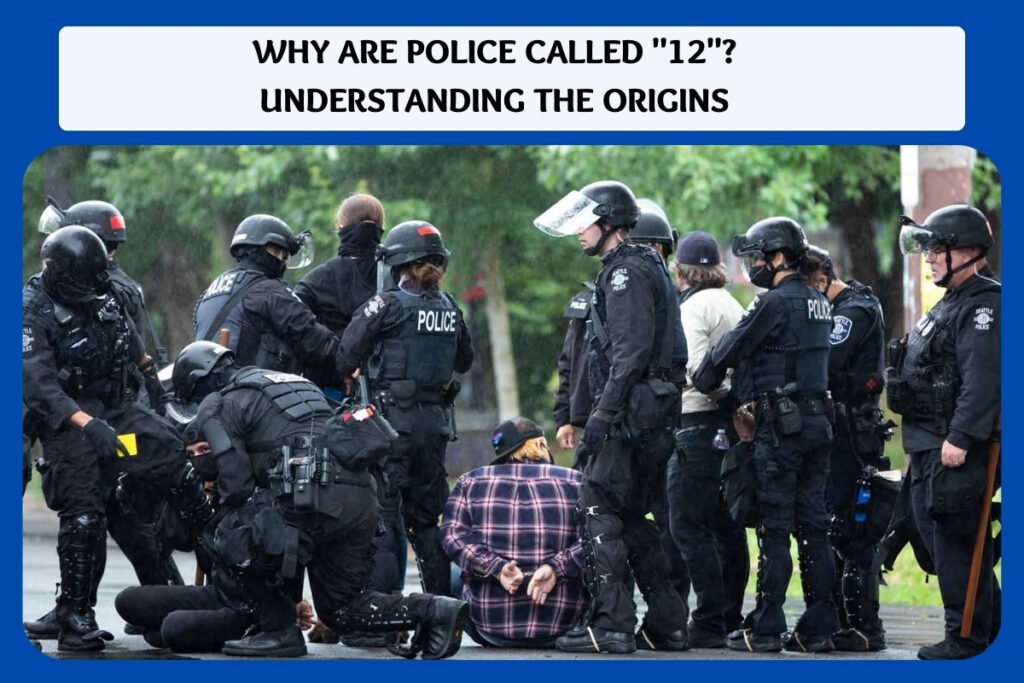Why Police Called 12 Matters: A Comprehensive Guide
In recent years, the term "police called 12" has gained significant attention in discussions about emergency response systems and public safety. Understanding this concept is crucial for anyone interested in learning about how law enforcement agencies function in emergency situations. In this article, we will explore what "police called 12" means, its significance, and the broader implications for public safety.
When emergency situations arise, the ability of law enforcement to respond effectively can mean the difference between life and death. The term "police called 12" often refers to situations where police officers are summoned to handle critical incidents, often involving life-threatening scenarios. This article aims to provide a thorough understanding of the term and its importance in modern policing.
As we delve into the details, we will also examine the broader implications of emergency response systems, the challenges faced by law enforcement agencies, and how advancements in technology are shaping the future of public safety. Let’s explore this critical topic in depth.
Read also:Discover The Magic Of Anjali Arora Ed Video A Comprehensive Guide
Table of Contents
- Introduction to Police Called 12
- What Does Police Called 12 Mean?
- The History of Emergency Response Systems
- How the Process Works
- Challenges in Emergency Response
- The Role of Technology in Enhancing Response
- Key Statistics and Data
- Training and Preparation for Officers
- Public Awareness and Education
- The Future of Emergency Response
- Conclusion
Introduction to Police Called 12
In the world of law enforcement, the term "police called 12" refers to situations where police officers are dispatched to handle emergencies involving life-threatening situations. These emergencies can range from violent crimes to medical crises, requiring immediate intervention by trained professionals. The phrase itself has become synonymous with high-stakes scenarios where every second counts.
Importance of Emergency Response
The effectiveness of emergency response systems is a critical component of public safety. When law enforcement agencies are called to action, their ability to respond swiftly and efficiently can save lives and prevent further harm. Understanding the mechanisms behind these responses is essential for anyone interested in public safety and criminal justice.
What Does Police Called 12 Mean?
The term "police called 12" is often used to describe situations where police officers are summoned to handle critical incidents. These incidents typically involve life-threatening situations that require immediate intervention. The number "12" is often used as a code in some jurisdictions to signify the severity of the situation.
Common Scenarios
- Active shooter situations
- Hostage negotiations
- Medical emergencies requiring law enforcement presence
- Domestic violence incidents
The History of Emergency Response Systems
The evolution of emergency response systems has been shaped by technological advancements and societal needs. From the early days of telegraph-based communication to the modern era of digital dispatch systems, the way law enforcement agencies respond to emergencies has evolved significantly.
Key Milestones
- Introduction of the 911 system in the United States
- Development of radio communication for police forces
- Integration of GPS technology in emergency vehicles
How the Process Works
When an emergency call is made, a series of steps are initiated to ensure a swift and effective response. Dispatchers play a crucial role in coordinating the efforts of law enforcement, fire departments, and medical personnel. Understanding this process is essential for appreciating the complexity of emergency response systems.
Steps in the Process
- Receiving the call
- Assessing the situation
- Dispatching the appropriate resources
- Coordinating on-site operations
Challenges in Emergency Response
Despite advancements in technology and training, emergency response systems face numerous challenges. These challenges can hinder the effectiveness of law enforcement agencies in handling critical incidents. Understanding these obstacles is crucial for developing solutions to improve response times and outcomes.
Read also:A Helping Hand For Venezuela Donations Pouring In
Common Challenges
- Limited resources
- Communication barriers
- Training gaps
The Role of Technology in Enhancing Response
Technology has played a pivotal role in improving emergency response systems. From advanced communication tools to real-time data analytics, technological advancements have enabled law enforcement agencies to respond more effectively to emergencies. Exploring these innovations can provide insights into the future of public safety.
Innovative Solutions
- Body-worn cameras for officers
- Artificial intelligence for predictive analysis
- Drone technology for surveillance
Key Statistics and Data
Data plays a crucial role in understanding the effectiveness of emergency response systems. By examining key statistics, we can gain insights into the challenges faced by law enforcement agencies and the progress being made in improving response times and outcomes.
Relevant Statistics
- Average response time for emergency calls
- Number of calls handled annually
- Success rates in critical incidents
Training and Preparation for Officers
Effective emergency response requires well-trained officers who are prepared to handle a wide range of scenarios. Training programs for law enforcement agencies focus on developing skills in crisis management, communication, and tactical operations. Understanding these programs can provide insights into the preparation required for officers to handle "police called 12" situations.
Training Programs
- Crisis intervention training
- Tactical operations training
- Communication skills development
Public Awareness and Education
Public awareness and education play a crucial role in enhancing emergency response systems. Educating the public about how to respond in emergencies can improve outcomes and reduce the burden on law enforcement agencies. Programs aimed at increasing public awareness can lead to more effective collaboration between citizens and law enforcement.
Community Programs
- Citizen preparedness workshops
- Community policing initiatives
- Public information campaigns
The Future of Emergency Response
As technology continues to evolve, the future of emergency response systems looks promising. Innovations in artificial intelligence, data analytics, and communication technologies are expected to revolutionize the way law enforcement agencies handle emergencies. Exploring these advancements can provide a glimpse into the future of public safety.
Potential Developments
- AI-driven predictive policing
- Advanced data analytics for real-time decision-making
- Integration of smart city technologies
Conclusion
In conclusion, understanding the concept of "police called 12" is essential for anyone interested in public safety and emergency response systems. This article has explored the significance of the term, its historical context, and the challenges faced by law enforcement agencies in handling critical incidents. By examining the role of technology, training, and public awareness, we can appreciate the complexity of emergency response systems and the progress being made to improve them.
We invite you to share your thoughts and experiences in the comments section below. Your feedback is valuable in helping us improve our content and provide more insightful information. Additionally, we encourage you to explore other articles on our site for more in-depth discussions on public safety and law enforcement.


